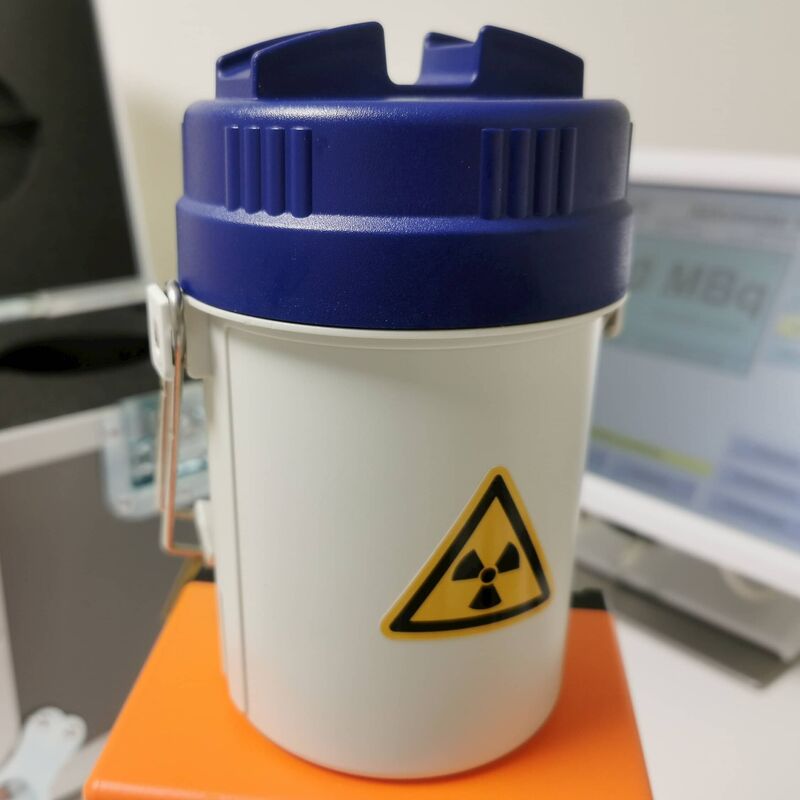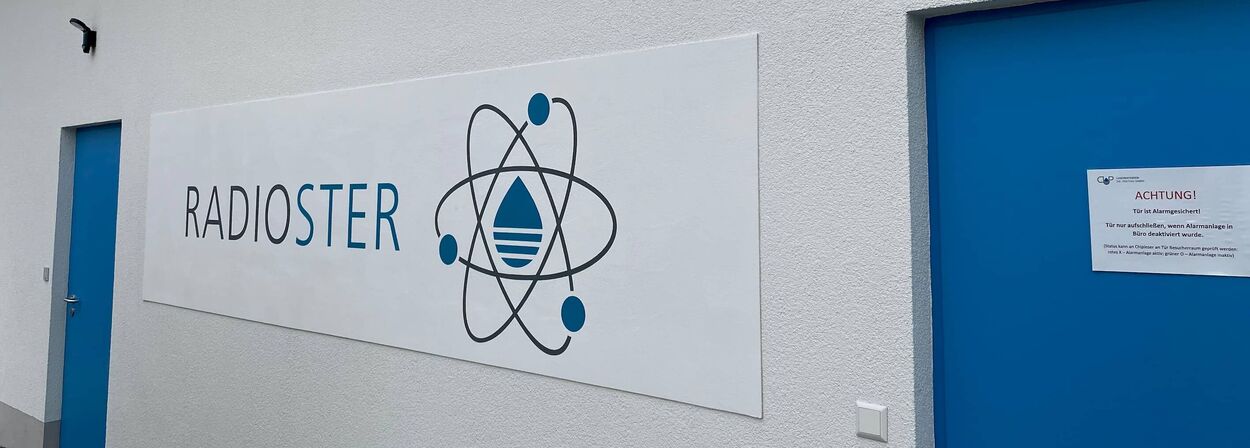
Radiopharmaceuticals are compounds labelled with radionuclides that are used for diagnostic and therapeutic applications. One atom of a compound is radioactive, they are called radiolabelled compounds. Radiopharmaceuticals are used in nuclear medicine.
For therapy using radiotherapeutics, it is necessary to develop both tumour-affine and tumour-selective carrier molecules for the radionuclides so that they bind as mainly as possible to tumour tissue. The radionuclides used for this are particle emitters whose energetic effect can destroy tumour cells. The radionuclide iodine-131 (131I) has been used since the late 1930s in the form of its simplest compound, iodide, to treat thyroid carcinomas. Especially after 1990, other radiotherapeutic agents have been added. In addition to iodine-131, more and more compounds labelled with the radionuclides yttrium-90 (90Y) and lutetium-177 (177Lu) are being used in routine radionuclide therapy.
Theranostics
In theragnostics (also theranostics) using radiopharmaceuticals, the same active principle is used for both diagnostic and therapeutic purposes of a specific disease (theragnostics - artificial word from therapy and diagnostics). In the context of radiotherapeutics, a vector molecule (above-mentioned carrier molecules, for example peptides) is initially labelled with a diagnostic radionuclide, with this the examination of the patient is carried out, the tumour is made visible and characterised. If the same molecule is labelled with a therapeutic radionuclide, this radiotherapeutic agent binds to the same tumour cells and they can be destroyed. Ideally, radioisotopes, i.e. radioactive species of the same element with different radiation properties, are used for the radiodiagnostic or the radiotherapeutic. But chemically similar radionuclides can also be used for this purpose; a typical example is the use of a 68Ga-labelled radiopharmaceutical for diagnostics and the use of a therapeutic radionuclide such as 90Y or 177Lu for therapy.
Modern medicine is increasingly striving for "personalised medicine": This is a characteristic of nuclear medicine and is particularly evident with these applications.
Some properties of 90Y and 177Lu
The radionuclides 90Y and 177Lu differ in chemical and nuclear-physical properties. One characteristic property is the half-life (90Y - 64.1 hours, 177Lu - 6.65 days). 90Y is a "hard", i.e. high-energy, beta emitter (β-), this radiation has a maximum penetration depth of 11 mm in water or also in human tissue; in contrast, 177Lu is a "soft", i.e. low-energy, beta emitter (β-) with a maximum penetration depth of 1.7 mm. In contrast to 90Y, 177Lu additionally emits gamma radiation, which on the one hand can be used to control the application in a diagnostic sense, but on the other hand causes additional radiation exposure for e.g. clinical staff.
The similar chemical properties of both radiometals mean that the metal-binding part of the molecule (the chelator) enables stable binding of both radiometals, i.e. the radiometals can be fixed in the radiotherapeutic/tumour tissue compound with long-term stability.
90Y or 177Lu?
The clinical application of therapeutic radionuclides depends on the medical indications; it is also partly influenced by the availability of radionuclides. Examples of 90Y- and 177Lu-labelled therapeutics are the somatostatin analogues 90Y-labelled DOTATOC and 177Lu-labelled DOTATATE for the therapy of neuroendocrine tumours and 177Lu-labelled PSMA-617 for metastatic prostate carcinoma. The use of both 90Y- and 177Lu-labelled vector molecules on the same patient has also been described in the literature (e.g. 90Y/177Lu-DOTATATE). The size of tumours or the formation of metastases plays a role in the selection of the labelling nuclide. The half-life influences the required radiation dose in the tumour.
Testing for sterility of 90Y and 177Lu radiopharmaceuticals
90Y and 177Lu radiotherapeutics manufactured for patient use must be tested for sterility according to the European Pharmacopoeia (Ph. Eur). The energy input caused by the radioactive conversion processes does not lead to a defined autosterilisation effect, as described in the article Sterility testing of radiopharmaceuticals[1]. For more information on the subject of sterility testing of radiopharmaceuticals, see:
Sterility testing of radiopharmaceuticals
Following the successful establishment of sterile testing of 177Lu radiotherapeutics, RADIOSTER now also offers sterile testing for 90Y radiotherapeutics.
If you would like to test other radionuclide-labelled substances, please contact us. We are constantly expanding the list of testable radionuclides.
For more information, please visit www.cup-freitag.de/radioster
Contact us
The experts at CUP Laboratorien Dr. Freitag GmbH will be happy to advise you with their knowledge.
Rebecca Siegert
radioster@cup-freitag.de


